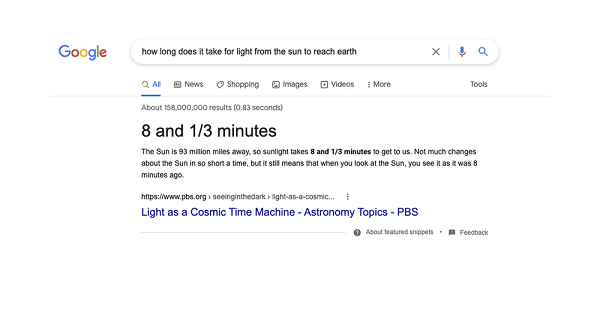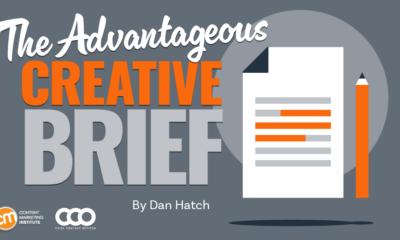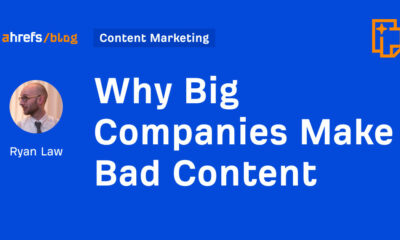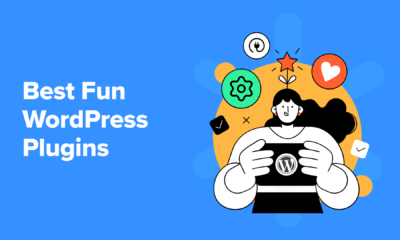SOCIAL
Google Outlines New Algorithm Improvements to Improve the Accuracy of its Displayed Search Results

Google’s looking to add more context to its Search results, in order to mitigate the spread of misinformation, by adding improved contextual data matching for Search Snippets, and more supplementary info within Search results, in order will help users decide on which results are most accurate.
First off, Google’s improved its algorithms that fuel its Search snippets, which are the direct response results that it displays in Search queries.
As explained by Google:
“By using our latest AI model, Multitask Unified Model (MUM), our systems can now understand the notion of consensus, which is when multiple high-quality sources on the web all agree on the same fact. Our systems can check snippet callouts (the word or words called out above the featured snippet in a larger font) against other high-quality sources on the web, to see if there’s a general consensus for that callout, even if sources use different words or concepts to describe the same thing. We’ve found that this consensus-based technique has meaningfully improved the quality and helpfulness of featured snippet callouts.”
In other words, the system can now double-check stated facts and claims for use in snippets, which should help to improve the accuracy of the displayed results.
In addition, Google also says that its systems are also getting better at understanding when a featured snippet doesn’t provide relevant context.
“This is particularly helpful for questions where there is no answer: for example, a recent search for “when did snoopy assassinate Abraham Lincoln” provided a snippet highlighting an accurate date and information about Lincoln’s assassination, but this clearly isn’t the most helpful way to display this result.”
Google says that it’s reduced the appearance of featured snippets in such cases by 40%, helping to improve immediate answers, while also stopping the spread of misleading or false responses.
Though that probably doesn’t help site managers that are looking to drive traffic from Google. Snippets provide immediate answers for searchers, but they also reduce the need for users to click-through to the actual site – so while this may be an improvement for Google’s UI, it’s not great for web managers and those reliant on Search referrals (i.e. everyone) to get people to their content.
So yay for Google, boo for everyone else. Maybe keep tabs on your SEO data for any potential declines as a result (though good luck identifying this as the cause).
Google’s also looking to help provide searchers with more context around why certain results are displayed, including expanded context within its ‘About this result’ element.

As you can see in this example, the update will include the addition of info on how widely a source has been circulated, online reviews about the source or company, and information on site ownership. That could help to provide important context on the information presented, which may influence the searchers’ view on the accuracy of the listed info.
Google’s also expanding its ‘Content Advisory’ warnings on search results where its system doesn’t have high confidence in the overall quality of the results available.

Google notes that this does not indicate that no helpful information is available, or that a particular result is low-quality, it simply adds more context about the whole set of results on the page.
Information accuracy is increasingly important in the modern age, where people have become more reliant on using web sources to clarify facts. Social media platforms are often identified as a key impediment in this respect, as they provide the capacity for anyone to broadcast anything on any given topic, true or not, and that’s one contributing factor that’s led to an overall decline in trust in online media outlets.
Indeed, Google itself recently partnered with YouGov on a new survey, which found that 62% of internet users now believe that they see false or misleading information on a weekly basis.

It’s harder than ever to sort fact from fiction, which is why additions like these are important for ensuring trust in Google’s products, and keeping Search, which is a key platform for all kinds of research, as accurate and valuable as possible for all users.
No one wants to facilitate the spread of misinformation, but at the same time, no one wants to stop people from sharing their views and perspectives either. These new additions seek to strike a balance between these elements, by adding contextual matching to Google’s Search results to better align with overall consensus from trusted sources.
SOCIAL
Snapchat Explores New Messaging Retention Feature: A Game-Changer or Risky Move?

In a recent announcement, Snapchat revealed a groundbreaking update that challenges its traditional design ethos. The platform is experimenting with an option that allows users to defy the 24-hour auto-delete rule, a feature synonymous with Snapchat’s ephemeral messaging model.
The proposed change aims to introduce a “Never delete” option in messaging retention settings, aligning Snapchat more closely with conventional messaging apps. While this move may blur Snapchat’s distinctive selling point, Snap appears convinced of its necessity.
According to Snap, the decision stems from user feedback and a commitment to innovation based on user needs. The company aims to provide greater flexibility and control over conversations, catering to the preferences of its community.
Currently undergoing trials in select markets, the new feature empowers users to adjust retention settings on a conversation-by-conversation basis. Flexibility remains paramount, with participants able to modify settings within chats and receive in-chat notifications to ensure transparency.
Snapchat underscores that the default auto-delete feature will persist, reinforcing its design philosophy centered on ephemerality. However, with the app gaining traction as a primary messaging platform, the option offers users a means to preserve longer chat histories.
The update marks a pivotal moment for Snapchat, renowned for its disappearing message premise, especially popular among younger demographics. Retaining this focus has been pivotal to Snapchat’s identity, but the shift suggests a broader strategy aimed at diversifying its user base.
This strategy may appeal particularly to older demographics, potentially extending Snapchat’s relevance as users age. By emulating features of conventional messaging platforms, Snapchat seeks to enhance its appeal and broaden its reach.
Yet, the introduction of message retention poses questions about Snapchat’s uniqueness. While addressing user demands, the risk of diluting Snapchat’s distinctiveness looms large.
As Snapchat ventures into uncharted territory, the outcome of this experiment remains uncertain. Will message retention propel Snapchat to new heights, or will it compromise the platform’s uniqueness?
Only time will tell.
SOCIAL
Catering to specific audience boosts your business, says accountant turned coach

While it is tempting to try to appeal to a broad audience, the founder of alcohol-free coaching service Just the Tonic, Sandra Parker, believes the best thing you can do for your business is focus on your niche. Here’s how she did just that.
When running a business, reaching out to as many clients as possible can be tempting. But it also risks making your marketing “too generic,” warns Sandra Parker, the founder of Just The Tonic Coaching.
“From the very start of my business, I knew exactly who I could help and who I couldn’t,” Parker told My Biggest Lessons.
Parker struggled with alcohol dependence as a young professional. Today, her business targets high-achieving individuals who face challenges similar to those she had early in her career.
“I understand their frustrations, I understand their fears, and I understand their coping mechanisms and the stories they’re telling themselves,” Parker said. “Because of that, I’m able to market very effectively, to speak in a language that they understand, and am able to reach them.”Â
“I believe that it’s really important that you know exactly who your customer or your client is, and you target them, and you resist the temptation to make your marketing too generic to try and reach everyone,” she explained.
“If you speak specifically to your target clients, you will reach them, and I believe that’s the way that you’re going to be more successful.
Watch the video for more of Sandra Parker’s biggest lessons.
SOCIAL
Instagram Tests Live-Stream Games to Enhance Engagement

Instagram’s testing out some new options to help spice up your live-streams in the app, with some live broadcasters now able to select a game that they can play with viewers in-stream.
As you can see in these example screens, posted by Ahmed Ghanem, some creators now have the option to play either “This or That”, a question and answer prompt that you can share with your viewers, or “Trivia”, to generate more engagement within your IG live-streams.
That could be a simple way to spark more conversation and interaction, which could then lead into further engagement opportunities from your live audience.
Meta’s been exploring more ways to make live-streaming a bigger consideration for IG creators, with a view to live-streams potentially catching on with more users.
That includes the gradual expansion of its “Stars” live-stream donation program, giving more creators in more regions a means to accept donations from live-stream viewers, while back in December, Instagram also added some new options to make it easier to go live using third-party tools via desktop PCs.
Live streaming has been a major shift in China, where shopping live-streams, in particular, have led to massive opportunities for streaming platforms. They haven’t caught on in the same way in Western regions, but as TikTok and YouTube look to push live-stream adoption, there is still a chance that they will become a much bigger element in future.
Which is why IG is also trying to stay in touch, and add more ways for its creators to engage via streams. Live-stream games is another element within this, which could make this a better community-building, and potentially sales-driving option.
We’ve asked Instagram for more information on this test, and we’ll update this post if/when we hear back.
-

 MARKETING7 days ago
MARKETING7 days agoHow To Develop a Great Creative Brief and Get On-Target Content
-
SEARCHENGINES7 days ago
Daily Search Forum Recap: April 30, 2024
-

 SEO6 days ago
SEO6 days agoWhy Big Companies Make Bad Content
-

 WORDPRESS7 days ago
WORDPRESS7 days ago13 Best Fun WordPress Plugins You’re Missing Out On
-

 SEO7 days ago
SEO7 days agoOpenAI To Show Content & Links In Response To Queries
-

 SEO6 days ago
SEO6 days agoHow To Drive Pipeline With A Silo-Free Strategy
-

 PPC6 days ago
PPC6 days ago26 Ready-to-Go AI Prompts for Social Media
-
SEARCHENGINES3 days ago
Daily Search Forum Recap: May 3, 2024








You must be logged in to post a comment Login